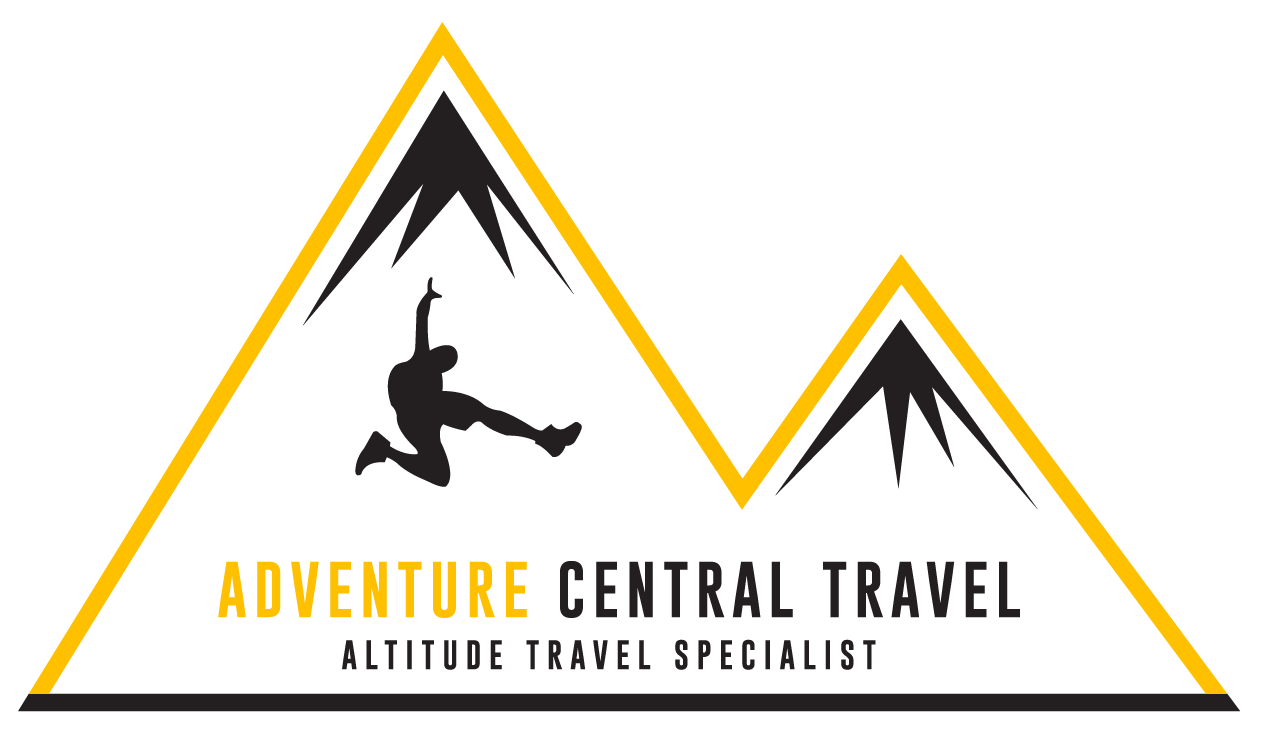EVEREST
BASE CAMP
EBC with Island Peak, Mera Peak or Lobuche Peak

Duration
19 Days

Location
Nepal

Difficulty
Challenging

Altitude
6,165 m

Cost
AUD 4,990
overview
Nepal, home to the legendary Mount Everest, is a dream destination for those looking to embark on their first high-altitude mountaineering adventure. Famous for its breathtaking Himalayan vistas and the warm hospitality of the Sherpa community, it offers a unique opportunity to experience the thrill of trekking and climbing in one of the most stunning places on Earth.
For those new to high-altitude mountaineering, the Everest Base Camp (EBC) trek is the perfect way to build your strength and acclimatize for the adventure ahead. This iconic route takes you through the stunning Khumbu Valley, winding past remote villages, lush forests, and dramatic valleys. Along the way, you will meet welcoming Sherpas, dive into their rich culture, and be captivated by the towering peaks surrounding you. Key landmarks such as Namche Bazaar, Tengboche Monastery, and the breathtaking Kala Patthar viewpoint offer incredible panoramic views of Mount Everest and its neighbouring peaks.
The journey culminates with our ultimate goal – ascending Island Peak (6,165m), also known as Imja Tse. The peak was named by the 1953 British Mount Everest expedition because it resembles an island in a sea of ice when viewed from Dingboche. This "trekking peak" is an ideal introduction to mountaineering, offering a mix of steep slopes, snow, and ice. It provides a thrilling yet manageable challenge for beginners, making it the perfect opportunity to experience the excitement of high- altitude climbing in the Himalayas.
This dual expedition is physically demanding and requires participants to be in good physical shape. If you're new to mountaineering or high-altitude environments, don’t worry – our carefully planned itinerary includes acclimatization days to help your body adjust to the altitude. To ensure you are ready for this adventure, we recommend committing to a fitness regimen before the trek, so you can enjoy the experience to its fullest.
If you are eager to push your limits and step into the world of high-altitude mountaineering, this journey to Everest Base Camp and Island Peak is the perfect starting point. Prepare for a life- changing adventure, and discover the wonders of Nepal’s mountains like never before!
ITINERARY
An early ascent to Gokyo Ri challenges the spirit, rewarding trekkers with breathtaking vistas of Everest and its surrounding peaks. The descent back to Gokyo is a journey back to tranquility, offering a chance to absorb the vastness of the landscape traversed.
The flight back to Kathmandu brings trekkers back to the starting point, closing the loop of an unforgettable journey. The vibrant city offers a stark contrast to the tranquility of the mountains, inviting celebrations and shared stories of the trek’s triumphs.
Arrival at Kathmandu. Introduction & final prep.
Fly to Lukla (2,860m). Trek from Lukla to Phakding (2,610m) | 4-4.5 hours
Phakding to Namche Bazaar (3,440m) | 7 hours
Acclimatisation day at Namche Bazaar
Namche Bazaar to Phortse Thanga (3,650m) | 5 hours
Phortse Thanga to Pheriche (4,371m) | 5-6 hours
Acclimatisation Day at Pheriche
Pheriche to Lobuche (4,910m); 5 hours
Lobuche to Gorak Shep (5,140m). Excursion around Everest Base Camp.
Gorak Shep to Kala Pathar (5,644m) & back to Lobuche; 8 hours
Lobuche to Chukung (4,730m); 7 hours
Chukung to Island Peak Base Camp (5,100m); 4 hours
Island Peak Base Camp to Island Peak High Camp (5,345m); 4 hours
Ascend to Island Peak summit (6,165m) and back to base camp.
Buffer Day
Island Peak Base Camp to Pangboche (3,910m); 5.5 hours
Pangboche to Namche Bazaar (3,440m); 4 hours
Namche Bazaar to Lukla (2,860m); 6 hours
Fly to Kathmandu
Departure
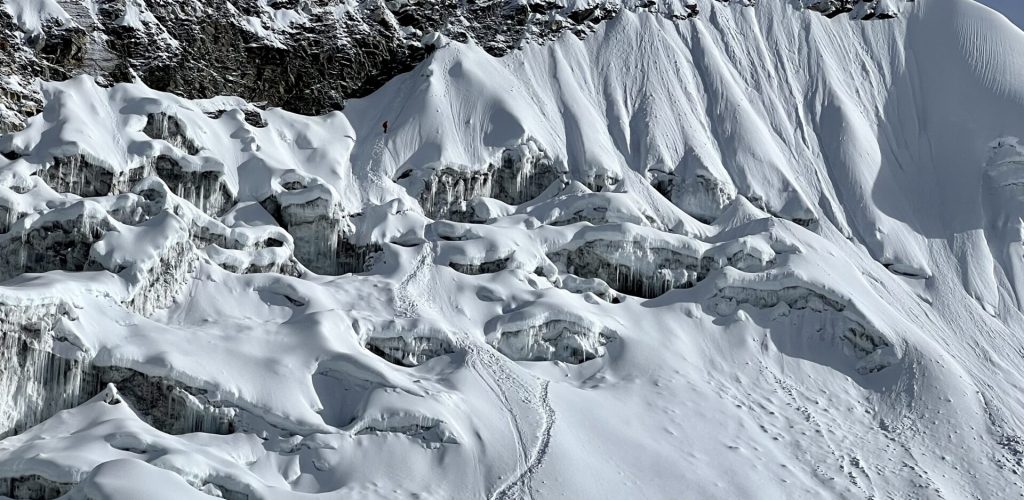
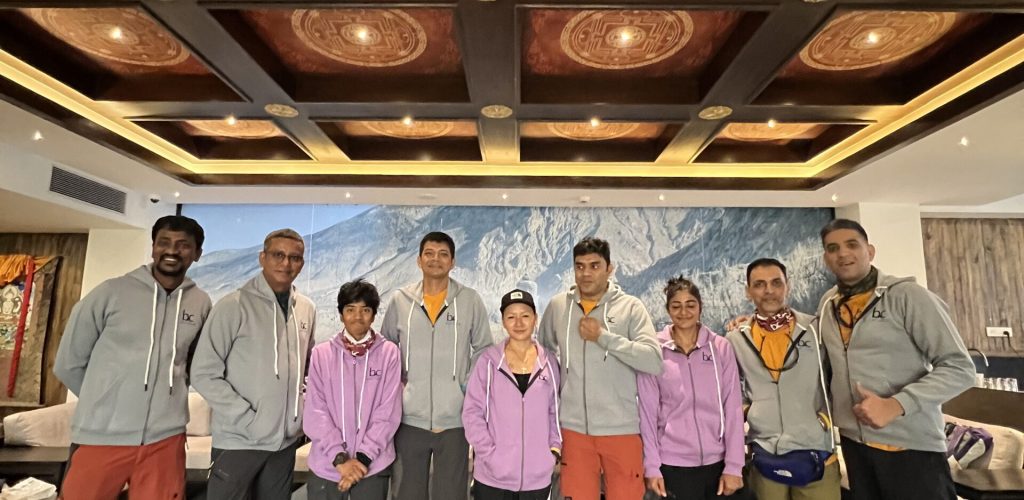
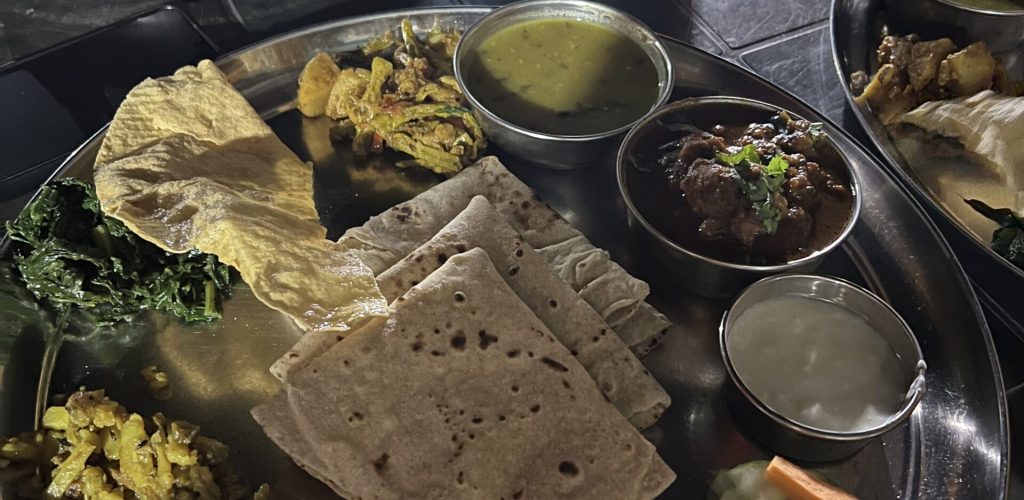
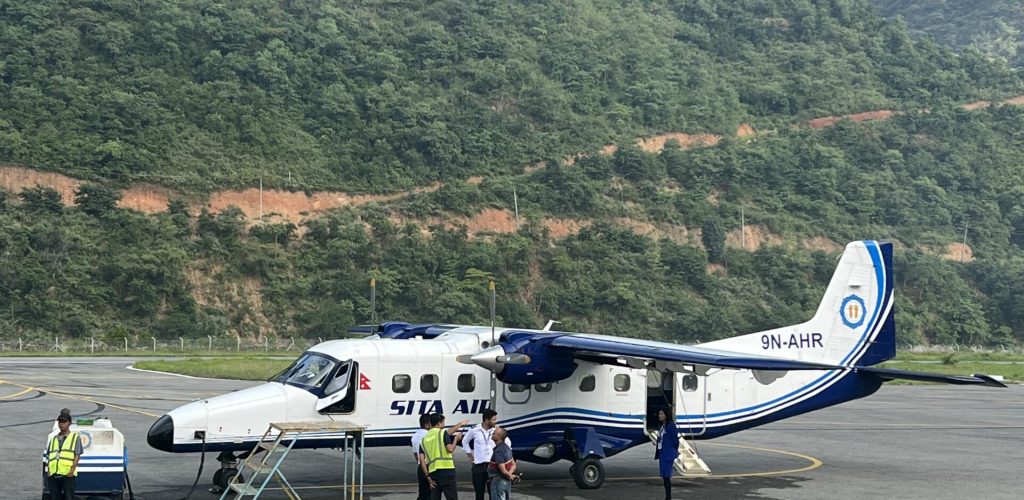
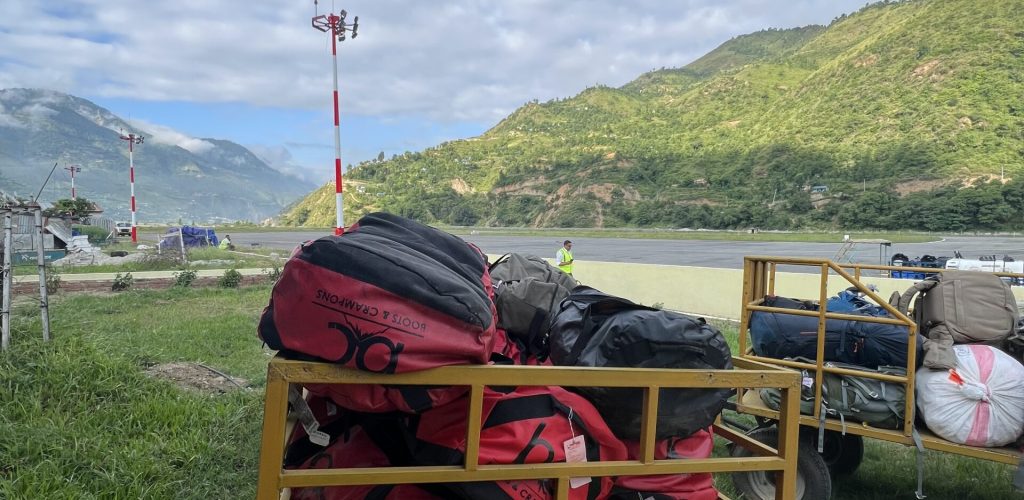
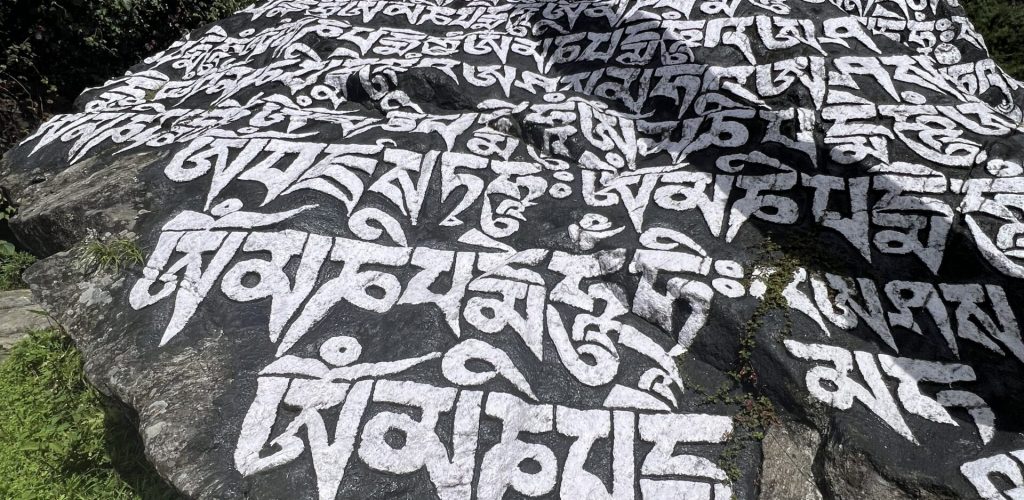
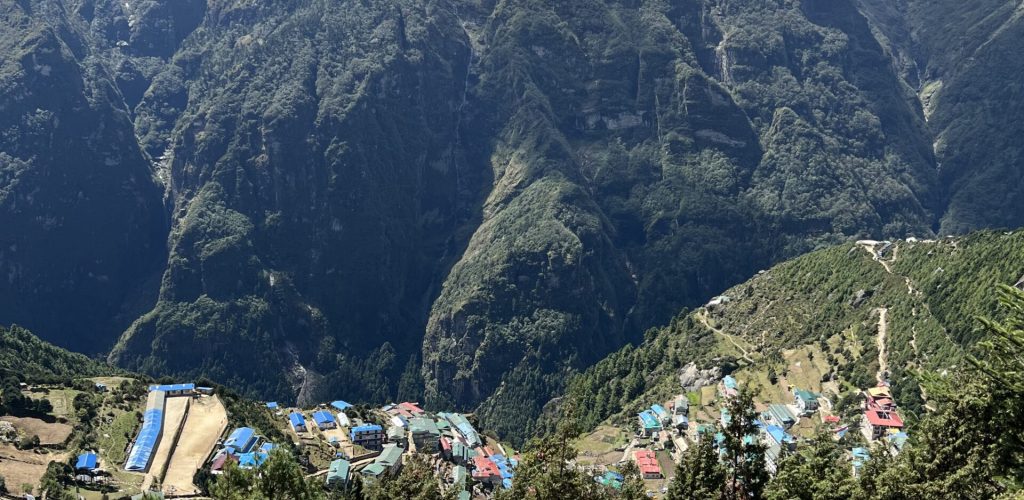
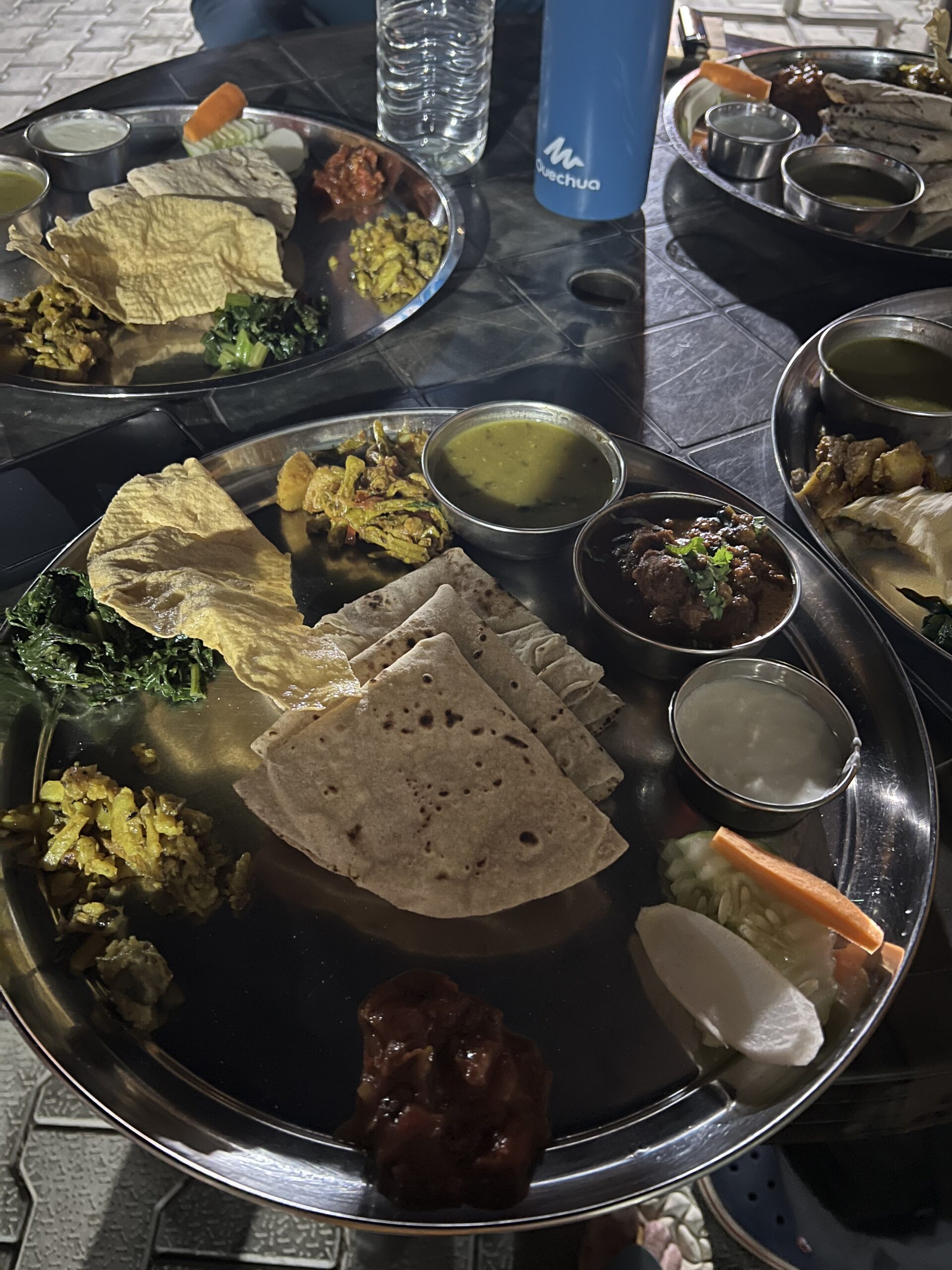
FOOD & CUISINE
ACCOMODATION
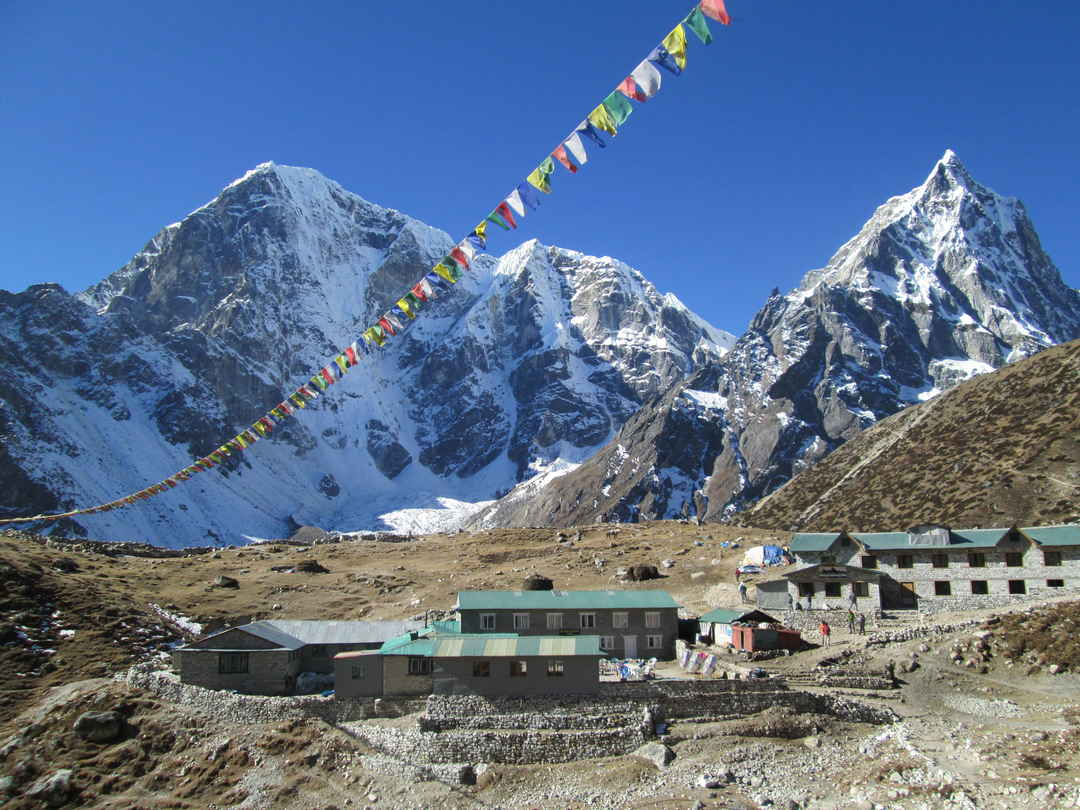
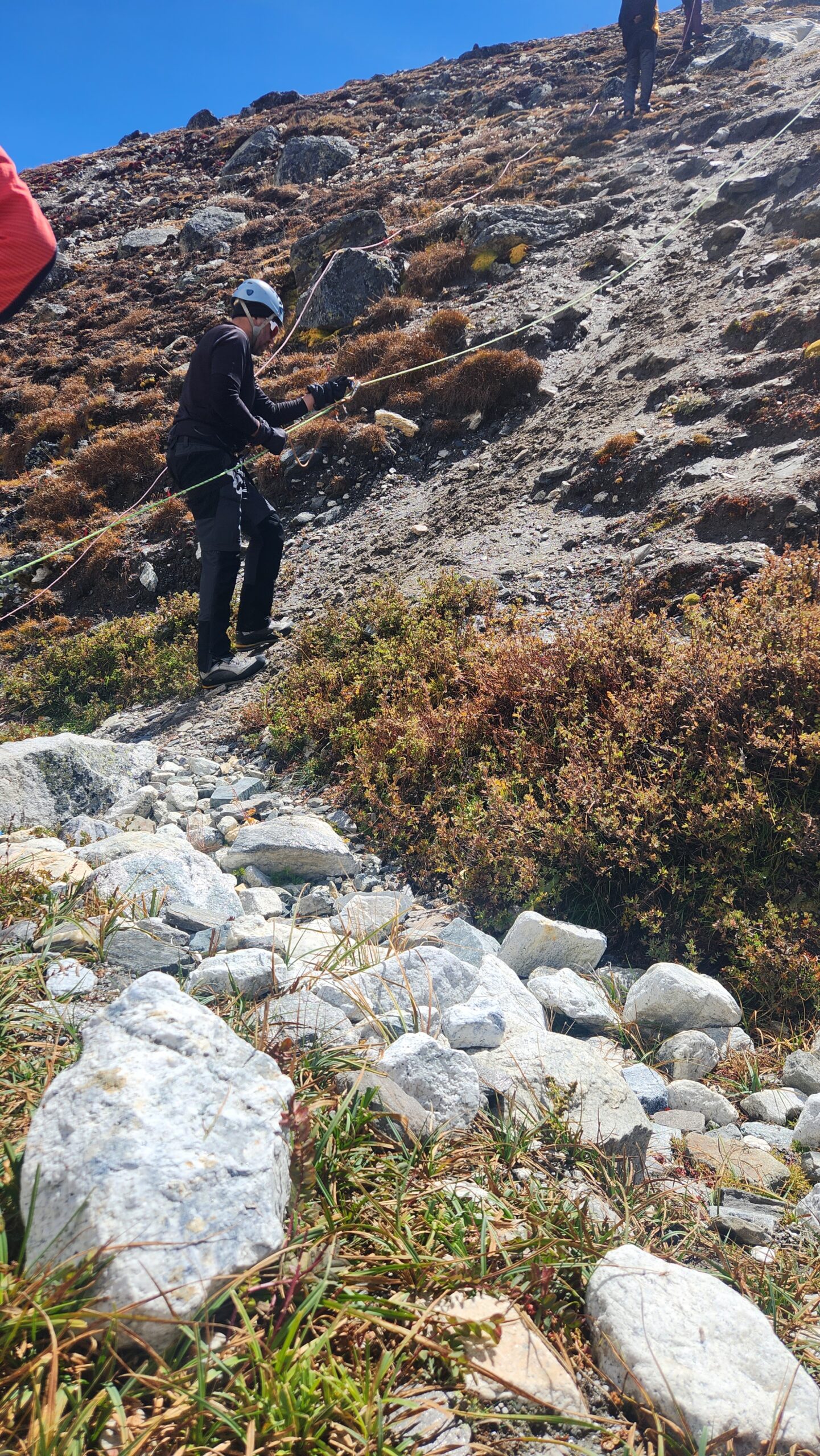
FITNESS & DIFFICULTY
HIGHLIGHTS
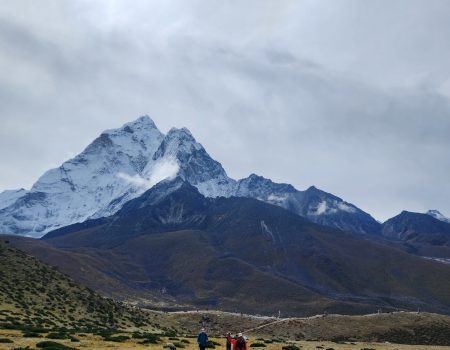
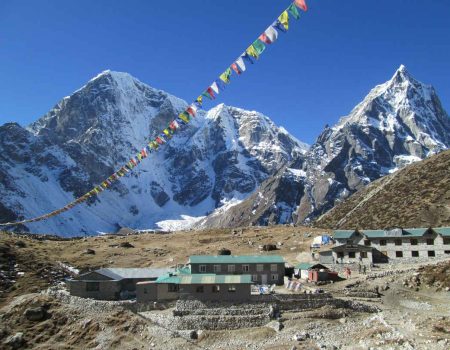
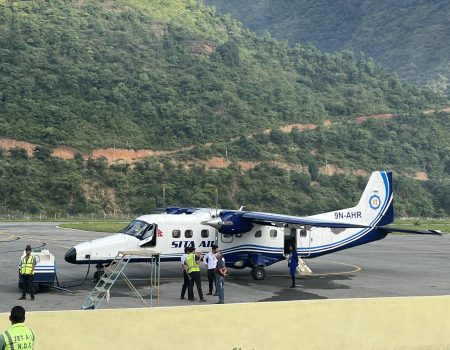
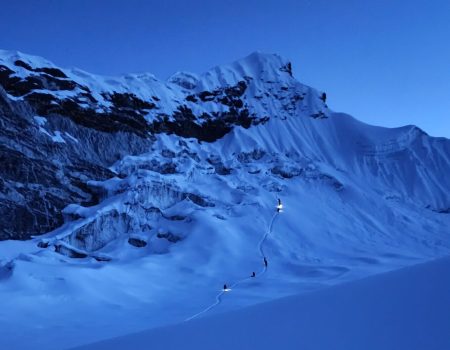
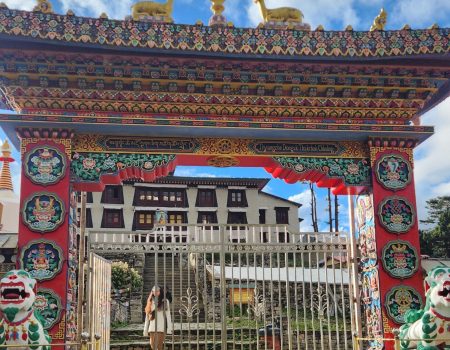
UPCOMING BATCHES
Trip Dates
AVAILABILITY
THINGS TO PACK
CLOTHING
- Thermal innerwear
- Light-weight quick dry trekking pants
- Wind-proof, gore-tex trouser & jacket
- Waterproof trouser and jacket or poncho
- Fleece trouser & jacket
- Full sleeves T-shirts, 3-4
- Down jacket
- 20 Litre Backpack
- Duffel Bag (provided by B&C)
- Walking/Snow Sticks (1 or 2, as per practice)
- Water Bottle (Paany recommended)
- Thermos Flask
- Headlight
- Sunglasses (plus backup pair)
- Personal Hygiene Kit (toothbrush, toothpaste, sanitizer, comb, soap, etc.)
- Personal Medicine Kit
- Extra Batteries, Solar Panel
- Skin Care Products (sunscreen, lip balm, moisturizer, Vaseline, etc.)
- Towels (small and thin), Tissues, Wipes
- Camera, Music Player, Books, Cards
FOR HEAD
- Woolen Warm Cap
- Balaclava
- Bandana
FOR HANDS
- 2 Pairs of Warm Gloves (Liner Gloves)
- 1 Pair of Waterproof Gloves
FOR LEGS
- 3 Pairs of Lightweight Socks
- 3 Pairs of Heavyweight Woolen Socks
- Ankle-High, Heavy Sole Trekking Boots
- Optional: Regular Sneakers (as a backup)
IMPORTANT NOTE:
- Please carry the creams and lotions in small packages just sufficient for 16 days.
- Go for lightweight, quick dry clothing
- Sleeping bag & Down jacket can be hired in Kathmandu
- Don’t carry anything new, unused items (clothing & shoes) on the mountains.
- You can safely leave extra luggage in Kathmandu at the hotel
THINGS TO PACK
CLOTHING

- Thermal innerwear
- Light-weight quick dry trekking pants
- Wind-proof, gore-tex trouser & jacket
- Water proof trouser and jacket or poncho
- Fleece trouser & jacket
- Full sleeves T-shirts, 3-4
- Down jacket
FOR HEAD
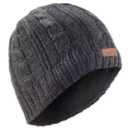
- Woolen Warm Cap
- Balaclava
- Bandana
For hands
- 2 pairs warm gloves (liner gloves)
- 1 pair water proof gloves

FOR FEET

- 3 Pairs of Lightweight Socks
- 3 Pairs of Heavyweight Woolen Socks
- Ankle-High, Heavy Sole Trekking Boots
- Optional: Regular Sneakers (as a backu
Others
- 20 Litre Backpack
- Duffel Bag (provided by B&C)
- Walking/Snow Sticks (1 or 2, as per practice)
- Water Bottle (Paany recommended)
- Thermos Flask
- Headlight
- Sunglasses (plus backup pair)
- Personal Hygiene Kit (toothbrush, toothpaste, sanitizer, comb, soap, etc.)
- Personal Medicine Kit
- Extra Batteries, Solar Panel
- Skin Care Products (sunscreen, lip balm, moisturizer, Vaseline, etc.)
- Towels (small and thin), Tissues, Wipes
- Camera, Music Player, Books, Cards

IMPORTANT NOTE:
- Carry creams and lotions in small packages for 21 days
- Go for light weight, quick dry clothing
- Don’t carry new, unused items on the mountains.
- Sleeping bag & down jacket can be hired in Kathmandu
- Duffel bag will be provided by the organizer to be used and returned
INCLUSIONS
- Airport transfers for arrival and departure.
- 4 nights’ accommodation in Kathmandu Guest House (or equivalent) with breakfast (single room at extra cost).
- Accommodation during the trek
- Guided sightseeing tour in Kathmandu including transport, guide, and entry permits.
- Round-trip flights between Kathmandu and Lukla on a twin-otter plane (helicopter option at cost in case of weather disruptions)
- Round-trip flights between Kathmandu and Lukla for guides, and porters
- Domestic airport departure taxes
- English-speaking guides and porters, including their salaries and insurance.
- Best available tea house accommodation with three daily meals (breakfast, lunch, and dinner) during the trek (menu items included, additional items at your own cost).
- Trekking & Climbing permits, National Park fees, TIMS Card, and taxes
- Porter or yak for carrying loads during the trek.
- Certificate of completion
- Waterproof duffel bag for the trek
- Farewell dinner with cultural music and dance
- Comprehensive medical kit (personal first aid kit recommended)
- Travel and rescue arrangements
EXCLUSIONS
- International airfare.
- Travel insurance (mandatory, including medical & helicopter rescue).
- Nepal visa (USD$50 on arrival, valid 30 days) & passport photo.
- Heli services during trekking.
- Meals & drinks in Kathmandu (except celebration dinner).
- Boiled water, beverages, and alcoholic drinks.
- Emergency medical evacuation.
- Tips for staff.
- Personal expenses (phone, laundry, bottled water, showers, charging, WiFi).
- Personal trekking & climbing gear (rental available in Kathmandu).
- Phone calls, internet, battery recharge, laundry, alcoholic beverages, specialty coffee or espresso drinks.
- Any other services not mentioned in the inclusions.
- Extra accommodation in Kathmandu due to early arrival, delays, or early return.
WHY CHOOSE US
01
Led by Experts
Our team's profound expertise, drawn from years of trekking, ensures an experience rooted in skill and knowledge. Each guide is not only certified but brings a personal passion and a wealth of practical know-how to your adventure.
02
Safety First, Summit Next
Our impeccable safety level speaks to our commitment to your well-being. From advanced equipment to rigorous safety protocols and emergency plans, we leave no stone unturned in ensuring your safety.
03
Customized Adventures
We specialize in crafting outdoor experiences that cater to your individual preferences. Our expeditions are adaptable to all skill levels, ensuring a journey that aligns perfectly with your aspirations and capabilities.
04
Clean & Green Trails
We are dedicated to sustainable trekking, ensuring our adventures are eco-friendly. Our practices aim to preserve the pristine beauty of the mountains, making sure they remain unspoiled for future generations.
05
Exceptional Customer Service
Award-winning customer service is at the heart of what we do. From planning to descent, our team is committed to providing you with support, ensuring a memorable and hassle-free trekking experience.
06
Unique Destinations
Our tours lead you to extraordinary destinations. From remote trails to culturally significant peaks, we offer a selection of routes that are as unique as they are breathtaking.
07
Trustworthy Name
Our achievements have helped us establish as a beacon of trust and quality in the industry. We are recognized for our unwavering commitment to providing safe, enriching, and successful trekking adventures.
08
High Success Rate
We boast a high success rate, a testament to our meticulous planning and personalized support. Our success is not just in reaching summits, but in ensuring each journey is safe, enjoyable, and surpasses expectations.
SAFETY MEASURES
At Adventure Central, the safety and well-being of our trekkers is our utmost priority, especially for challenging adventures like the Everest Base Camp Trek. We have implemented comprehensive safety measures to ensure a secure and enjoyable experience for all participants:
- Experienced Guides and Porters: Our team is composed of experienced, trained, and knowledgeable local guides and porters. They are well-versed in high-altitude trekking and are equipped to handle various mountain conditions effectively.
- Acclimatization Protocol: We strictly adhere to a carefully planned acclimatization schedule. This includes rest days and gradual ascent to help trekkers adapt to higher altitudes, reducing the risk of Acute Mountain Sickness (AMS).
- Regular Health Checks: Throughout the trek, our guides conduct regular health checks, monitoring for signs of AMS and other altitude-related issues. This includes monitoring heart rate, oxygen saturation, and overall physical and mental well-being.
- Emergency Preparedness: Our guides are trained in first aid and carry essential medical supplies. In case of a serious medical emergency, we have protocols in place for prompt evacuation, including coordination with helicopter rescue services. Oxygen cylinders are also available at the teahouses, if need be.
- Equipment and Gear: We ensure that all trekkers are adequately equipped with essential gear for high-altitude trekking. This includes providing advice on proper clothing, footwear, and other necessary equipment.
- Communication Systems: Our teams are equipped with two-way radios to ensure communication is maintained, even in remote areas of the trek.
- Weather Monitoring: We continuously monitor weather conditions and forecasts. Our itineraries are flexible to accommodate changes due to weather, ensuring the safety and comfort of our trekkers.
- Pre-Trek Briefings: Before embarking on the trek, we conduct comprehensive briefings covering safety procedures, trekking etiquette, and responsible tourism practices.
By implementing these safety measures, Adventure Central is committed to providing a safe, responsible, and unforgettable trekking experience to this trek.
YOU MAY ALSO LIKE
Discover similar treks from Boots & Crampons that quench your thirst for adventure.
FREQUENTLY ASKED QUESTIONS
We understand your pain when you have to cancel a trip for unforeseen reasons. To address this, while considering our advance arrangements, we’ve set up fair and reasonable cancellation guidelines. If you inform us about it:
A) More than 30 Days Prior to Start:
-Option for a 100% credit towards a future expedition.
-Alternatively, a 90% refund is available.
B) Between 30 to 10 Days Prior to Start:
-Eligible for a 50% refund of the total cost.
-Option to carry forward 75% of the payment towards a future expedition.
C) Less than 10 Days Prior to Start:
-A 10% refund is available under this notice period.
-Alternatively, 25% of the payment can be applied to a future expedition.
Yes, prior experience in high-altitude trekking or climbing, particularly on peaks over 5000 meters, is strongly recommended. This experience helps climbers acclimate to altitude and understand the physical and technical demands of the expedition.
Personal gear, including climbing equipment, proper clothing, and a sleeping bag, must be brought by climbers. We take care of all the other arrangements and common/camping equipment.
Climbing & Trekking Equipment like poles and gloves can be rented, but personal gear like jacket and boots are recommended for comfort and fit.
Appropriate clothing includes a base layer for moisture management, an insulation layer for warmth, and a waterproof and windproof outer layer. Additional accessories like gloves, hats, and thermal socks are essential for protection against the cold. Check out the “things to pack” section above for a complete list.
Accommodations include hotel in Kathmandu, teahouses during the trek through villages like Namche Bazaar, and camping in tents during the climb from the base camp.
Meals are included in the package and are served at teahouses or camps. The food ranges from local Nepalese dishes to more familiar Western-style meals, catering to various dietary preferences.
Clean drinking water is usually available throughout the trek. It’s often provided by the lodges or can be obtained from natural sources and treated with purification tablets or boiling.
Basic facilities are available at campsites, including dry pit toilets or portable toilets, depending on the location.
Mobile network and internet access are limited or non-existent in the region, with emergency communication usually via satellite phone.
Charging facilities are limited on the trek, so it’s advisable to bring extra batteries or portable solar chargers.
A high level of physical fitness is recommended. Participants should be able to hike for several hours a day in steep, high-altitude terrain. Pre-trip fitness training is advised to enhance endurance and strength.
It is highly recommended that climber come with a comprehensive travel insurance that covers high-altitude trekking, medical expenses, and emergency evacuation. It’s important to ensure that the policy covers the specific altitude of Ama Dablam.
The itinerary typically includes acclimatization days to adapt to higher altitudes. Guides are trained to recognize and manage altitude sickness symptoms, and descent is the immediate course of action if symptoms become severe.
Basic medical facilities and support are available at various points along the route. Guides often carry first aid kits, and larger groups may have a designated medical professional.
Expeditions are equipped with emergency evacuation plans, which may involve descent to a lower altitude, helicopter evacuation, or transport to a medical facility, depending on the severity and nature of the emergency.
Safety measures include experienced guides, use of proper equipment, adherence to established routes, and regular weather and condition assessments. Risk management protocols are strictly followed to ensure climber safety.
Climbers should be proficient in basic mountaineering skills, such as using crampons and ropes, navigating crevasses, and understanding glacier travel. These skills are crucial for safe climbing and dealing with the technical sections of the ascent.
Yes, qualified and experienced guides and instructors accompany climbers. They provide assistance with technical skills, route finding, and safety management, ensuring climbers are well-supported throughout the expedition.
During climbing seasons (spring and autumn), the weather is generally stable with less precipitation and clearer skies. However, weather in the Himalayas can be unpredictable, and climbers should be prepared for sudden changes.
Bathing is generally not recommended during the trek.
Weather plays a critical role in climbing conditions. Good weather can mean safer and more enjoyable climbs, while bad weather can lead to hazardous conditions, route changes, or delays.
We have a buffer day in our itinerary to accommodate bad weather or other unforeseen conditions. It is used to ensure the safety and success of the summit attempt.
If a climber cannot continue, the standard procedure involves safely descending with the assistance of guides. The well-being of the individual is prioritized, and decisions are made based on the severity of their condition.
We understand your pain when you have to cancel a trip for unforeseen reasons. To address this, while considering our advance arrangements, we’ve set up fair and reasonable cancellation guidelines. If you inform us about it:
- A) More than 30 Days Prior to Start:
-Option for a 100% credit towards a future expedition.
-Alternatively, a 90% refund is available.
- B) Between 30 to 10 Days Prior to Start:
-Eligible for a 50% refund of the total cost.
-Option to carry forward 75% of the payment towards a future expedition.
- C) Less than 10 Days Prior to Start:
-A 10% refund is available under this notice period.
-Alternatively, 25% of the payment can be applied to a future expedition.
